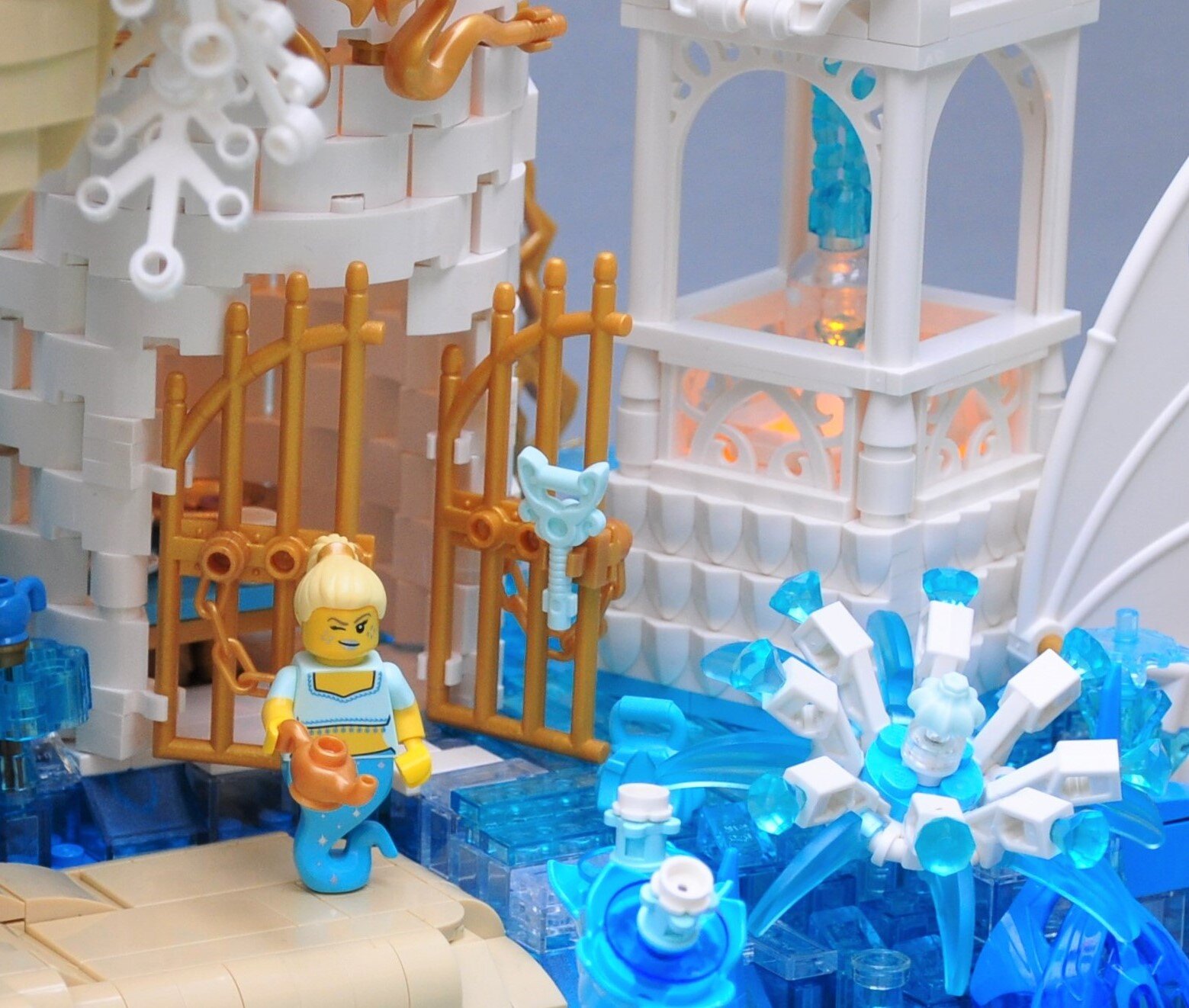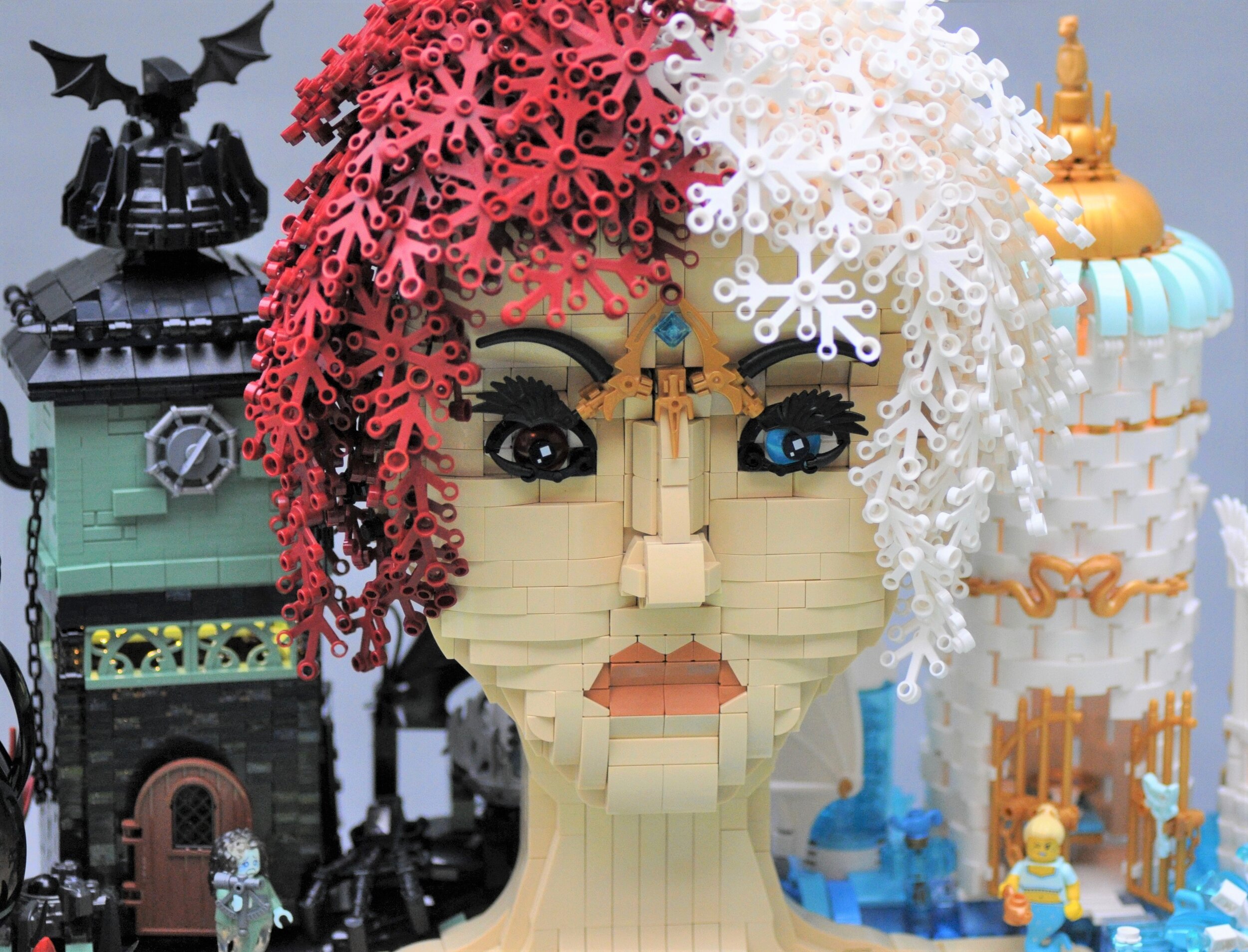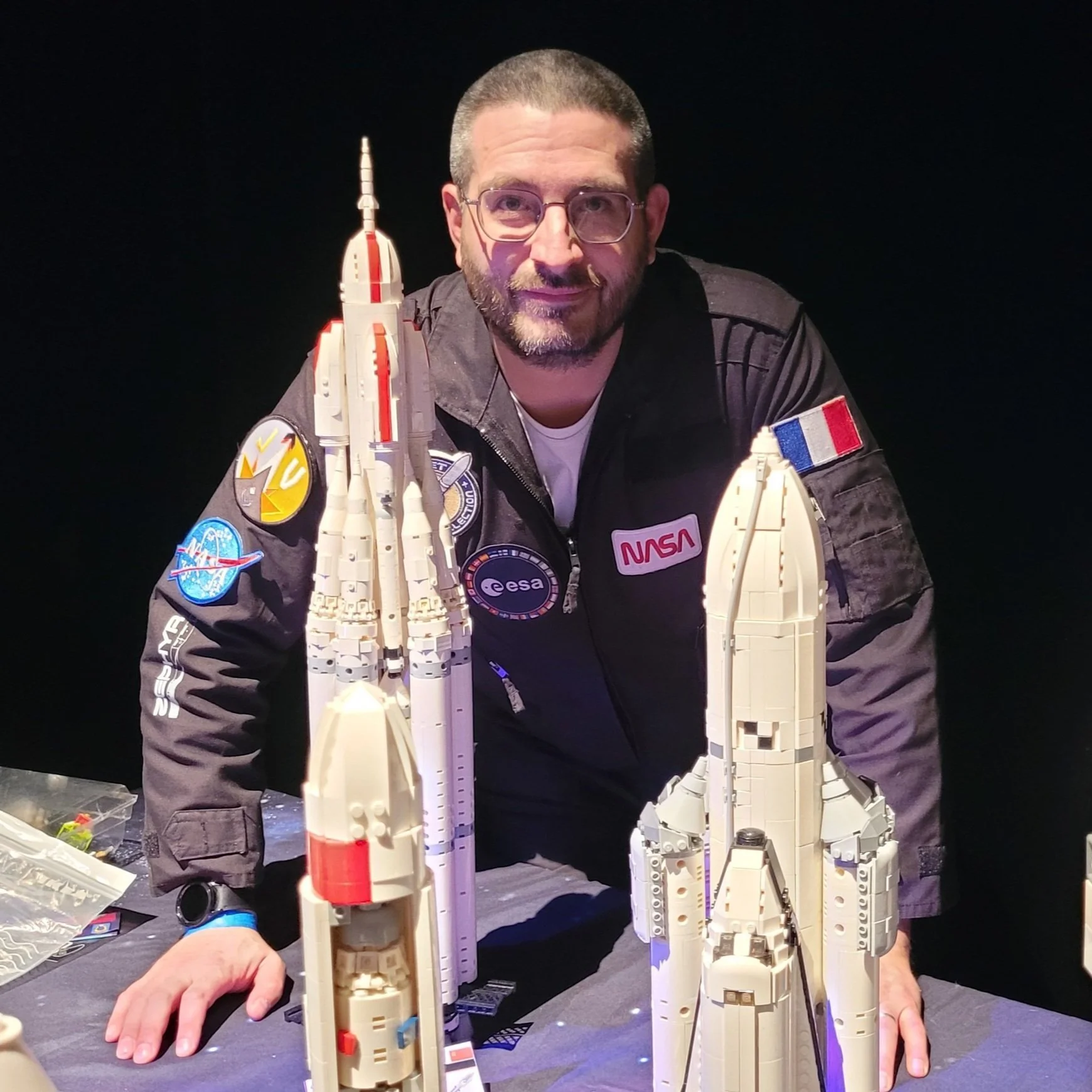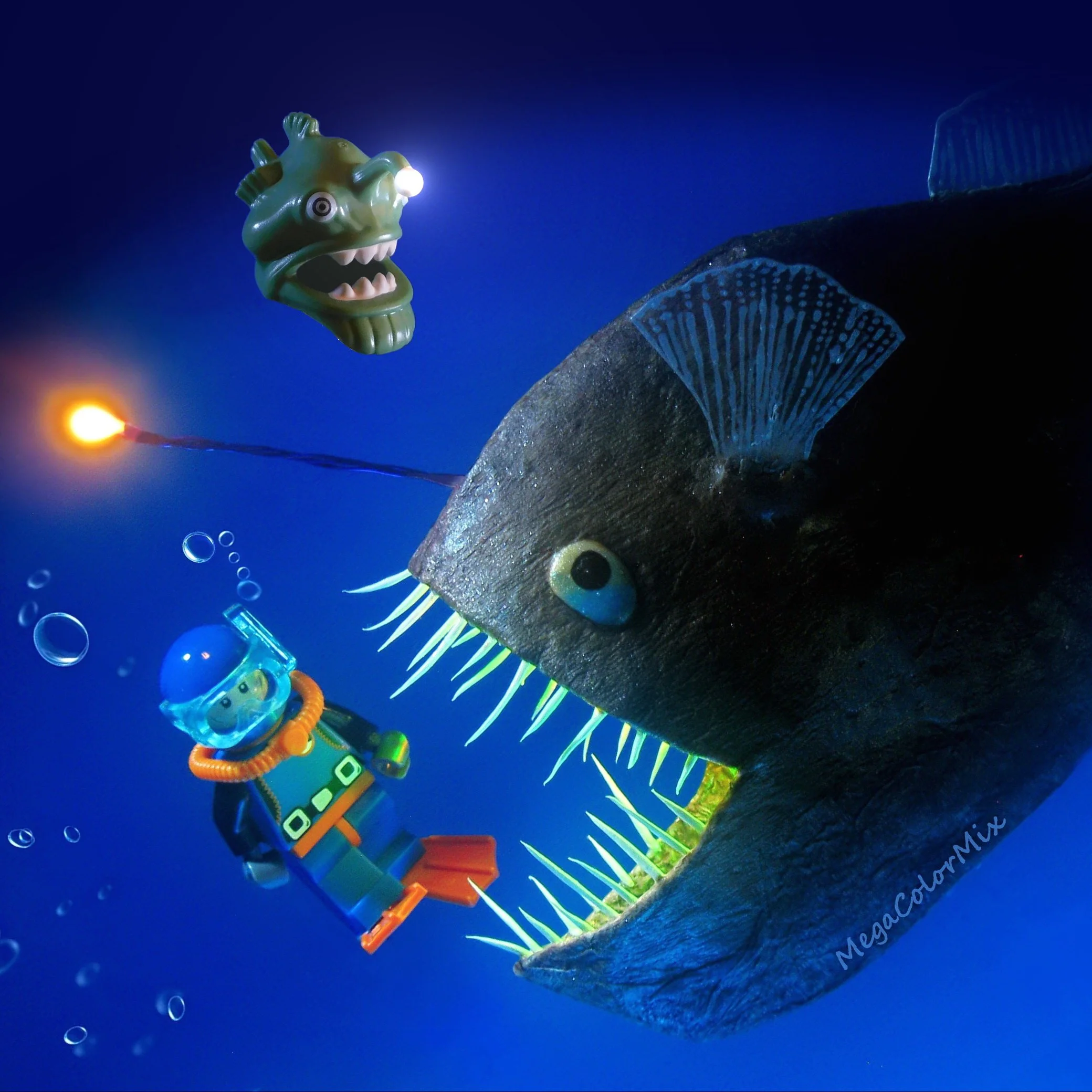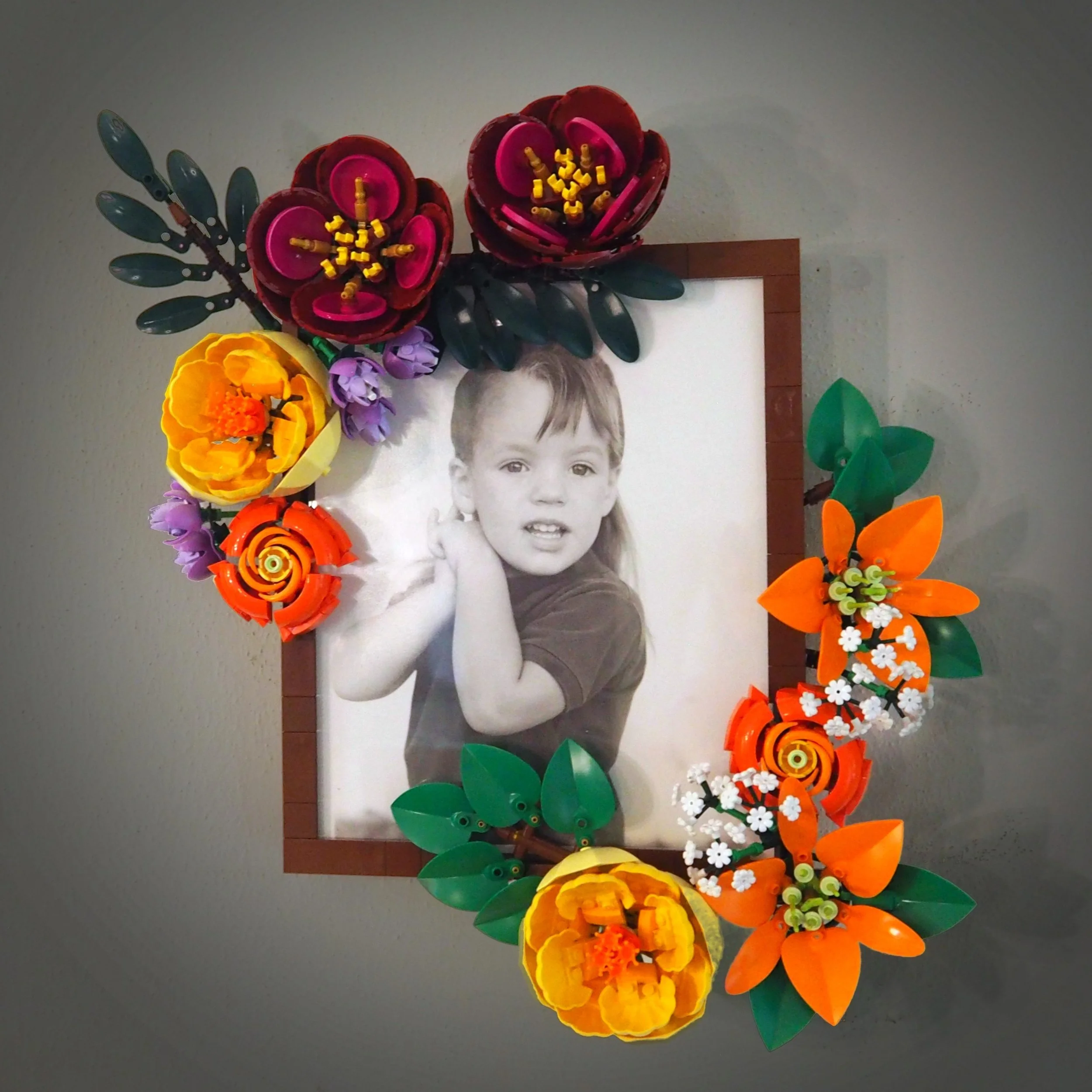Therapy, Neurodiversity and LEGO: A Personal Journal
/Welcome to my next piece in this LEGO puzzle of how to "find yourself" using LEGO bricks! My first article focused on creativity, pain and LEGO. In this article, I will detail how building a LEGO creation can work both as therapy and as a way to connect with other people. These connections led to deep talks with other AFOLs that started me on my journey to an ADHD diagnosis. Come along as I describe my revelations, and as a bonus, I’ve collected the experiences of other neurodiverse builders to help us to celebrate the similarities and differences in this great community.
Building to Express Your Inner Self
Since my teens, I have gone through a lot of therapy—mainly therapies based in CBT (Cognitive Behavioral Therapy) and ACT (Acceptance and Commitment Therapy) for coping with chronic pain. I also underwent a course in COS (Circle of Security) to help with postnatal depression. My driving force is to do better and be better, especially as a mother and a partner. This quality has driven me to continue to seek help, but through it all, I still felt different and alone. I felt emotional, inflexible, and incapable of the most mundane things.
Building a LEGO creation helped me through my maze of insecurities and led to many epiphanies.
In the fall of 2018, I started to sketch my next build on paper. I knew exactly how the build should feel, but the exact appearance was not very important to me. The feeling I experienced and wanted to convey was of having two vastly different sides. One side of me loves talking, meeting people, being active, and doing everything all at the same time—all with this enormous lifeforce. The other side of me loves quiet, reading, creating, and being alone all day long. I found two minifigures that represented these sides to me: Genie Girl (col193) and Banshee (col224). I wanted to place these minifigures on the shoulders of a person—not representing good and evil but still showing two conflicting and different sides.
Brick by brick, I infused the build with my thoughts, and through months of building, I learned more about myself. I used the building time to ponder, meditate, and discover myself. I developed self-acceptance, and I learned ways to integrate myself into the world outside my mind in a more healthy manner. I now see the advantages of both being creative by myself and showing my builds to others. Being a perfectionist with low energy is hard, and I learned to juggle with the concept of “good enough” in a safe environment. There was also a learning curve for me to handle feedback during the building process. My awesome friend Emma is an artist in giving feedback without hurting my fragile confidence. (Thank you for all your support through my builds!)
Worlds Inside of Me
I named this LEGO model “Worlds Inside of Me” (which was actually featured here on BrickNerd a few years ago.) Through this build, I hoped to communicate with people about the experience of what is going on inside of me without words. It has helped me to express things that are too hard to say or to receive.
When I build, I start with ideas on paper and continue using bricks to sculpt those ideas into reality. As my mind is often tired, it is my hands that do the work. I build and rebuild many times. The face seemed impossible to build but then I divided it into smaller parts: the nose first, then eyes, the lips, and lastly the overall face. It was a cool feeling when the facial recognition on my mobile camera reacted to the face! I was doing something right.
Building the head and shoulders took me a month and a half. After that, I built the surrounding landscape in four days. That is the part of a build that is the most natural for me. There are no rules on how it should look—my imagination sets the limits. I love to use all kinds of quirky pieces—can you find some of them?
The response I got was overwhelming. I not only received awesome and touching messages but also requests to publish it in the BrickJournal magazine, in educational materials about mental health, and a request that I put it up for sale. This build also helped me start personal discussions and helped others to open up to me. At LEGO exhibitions, I have the opportunity to start a dialogue with people of all ages—from small kids to elderly people—just by showing up with this pile of bricks. Planning, building, discussing, and reflecting about this creation has in itself been the best kind of therapy. Especially helpful because it was done by me, for me, and in a very safe and calming environment.
Becoming Aware
A year ago, I was diagnosed with ADHD—which actually led me to a deeper understanding of myself and this build. The diagnosis allowed me to let go of the shame and guilt about feeling and being different. I cannot possibly describe how it is to have ADHD—it’s too complex—but it explains my primal need to have my LEGO bricks sorted by both type and colour. And it explains the deep sense of gratification that comes from having an organized collection. LEGO is the only thing in my life that is orderly, and I can easily organize it again after my building chaos. Very little in life is that straightforward.
My ADHD also explains the force behind my focus. Some other AFOLs asked my husband about what he thought I might build after my dragon book (seen in my first article) and he replied, “My children want their mother back.” My husband is incredibly supportive, but I heard the sorrow in his response—how he missed me both for himself and for our kids. I had deep-dived into my building for two months and not been present.
Since that interaction, I am more aware. When starting a build, I determine how much building time is okay for me and my family, and then I carefully plan and prepare how I will break focus and maintain that balance. It’s not easy to break hyperfocus—when I'm building, it feels like it’s the only place where everything is in harmony! In that zone, I decide everything without having to take other people into consideration—but my family are much more important to me, and I therefore very consciously manage my hyperfocus and creative force.
Building Up by Sharing the Load
Knowing that the AFOL community is full of eloquent individuals facing similar struggles, I reached out on several Facebook groups for people to share their experiences. A wide range of AFOLs replied. All have some kind of neurodevelopmental disorder like ADHD (Attention Deficit Hyperactivity Disorder), ADD (Attention Deficit Disorder), or ASD (Autism Spectrum Disorder)—or some co-occurrence between them.
I have chosen not to describe these different disorders, but I encourage you to explore for yourself—there is so much information out there. The key concept I wanted to convey, however, is that even though neurodiverse people experience themselves very differently, they each experienced a unique connection between their conditions, their humanity, and LEGO. I could only include a small cross-section of the answers I received, so thank you to everyone who responded for their time and honest words. Here is a collection of anonymous responses I received:
“My mind floods itself with so many things I both want to, and things I should do. I end up feeling so anxious. I’m miserable... until I use one of my coping mechanisms. The best one I have found is LEGO. Assembling a LEGO set can act as a reset button. Going through the process of organizing parts and following directions, my focus zones in, and it is both a meditative and creative process. It does not fully correct the flurry of thoughts I must navigate/tolerate. But I feel calmed, and thus more confident in my ability to function well.“
“The attraction of the calm and joy can make it feel tempting to binge build, which can lead to binge spending. And one must take care not to let it consume all free time. I found myself the closest to going overboard on building after my mother died. For many months, I spent a bit too much time building. But I suppose I could have had a worse habit!”
“I love building sets and find them liberating because they have a clear finish. When I build my own builds, I often get an idea from a minifigure or set and then start building meticulously and detailed, but after a while I get bored and move onto the next build.”
“What made LEGO stand out is the immediate reward it gives. Hands on, snapping pieces together. Matching colors or shapes. Realizing ideas visually. Doing all this while providing endless intellectual challenges whenever wanted. On top of that, the deterministic behavior. No matter how endless the number of combinations there are, there are still rules that apply. Not written ones, but natural and logical ones, all because of how the LEGO piece is designed. This is the sweet spot of everything I need to be able to shut off the outside world. To cope with what is boiling inside. With LEGO, I can indulge myself in a healing and protective process that gives me space to breathe without compromising my need for creativity and intellectual challenges.”
“Being a person that always has found too many people, new situations, social gatherings and so on a challenge, I am completely astounded by the AFOL community. It embraces. It encourages. It feeds you with appreciation and understanding. I am profoundly grateful to have met and become friends with several AFOLs. It has taught me to be proud of myself. To dare more when it comes to being social and to accept when I do not want to or need to. Because everyone understands that, too."
“My life has not been easy, and it’s ongoing work to accept my uneven energy and limitations. In my new-found LEGO obsession, I found a way to express all my love of buildings, construction, and details. I have fallen completely and build for hours and forget to eat or rest. I find myself thinking about LEGO even when eating dinner with my family. I want to find more balance and limit my obsession, but it is hard as it calms me down and makes me so happy.”
“I have a hard time with anxiety and the one thing that can help me cope with it is doing creative things such as building LEGO, then I feel alive.“
“As I have an uneven cognitive profile, there are many things I find hard to do, but LEGO is exactly right for me and my skillset. The social part of life is important to me (despite my ASD) and in the AFOL Facebook groups I have met genuinely nice and kind people, and they make me not feel as alone and isolated. The only negative with the LEGO hobby is that I often keep it secret because I can’t handle conflict if someone says negative things or doesn’t understand my passion.”
“LEGO is incredibly low pressure, and if you make a mistake it's always fixable (I guess apart from wonky sticker applications!). Some creative hobbies don't really have that possibility, so even if I'm feeling pretty rubbish, I can still enjoy LEGO without worrying about mistakes.“
“When life in general gives you a hard time, then it’s perfect to have LEGO to turn to. When I get stressed up by work, get anxious over something or get all worn out because I have to struggle with my difficulties with autism, it’s lovely to know that I can dive into my boxes with LEGO bricks and just create something beautiful. Then I get new energy and I can take a break from my ordinary life while focusing on building and telling a story with bricks. It is my safe haven. The disadvantage of having autism and being an AFOL happens mainly during events and all that they entail, but they are so fun and all my friends are usually there so I go anyway, have a great time, then I just want to sleep for a week afterwards.”
Finding Balance
I think it is amazing how LEGO can help us develop our capabilities and challenge us to do things we didn’t think possible. It is a wonderous thing to find your equilibrium through building, sorting and all the other activities surrounding the LEGO hobby. Yes, LEGO can become an obsession, but in moderation, it can become the best kind of therapy to explore the worlds inside of you.
In my opinion, it is important to support other builders in their passion and to have a healthy dialogue about the balance between being an AFOL and the world that is not built by bricks. The support of people who understand is important for both ups and downs, and it makes me happy to find that I’m not alone as I live with my condition.
So now we have created the foundation of the series—what brickwork will be laid down next? Stay tuned, and have a cry of happy and sad tears with me next month.
Have you ever used LEGO as a form of therapy? Or have you ever lost yourself while going in too deep while building? Leave your thoughts in the comments below.
Do you want to help BrickNerd continue publishing quality articles like this one? Become a patron to show your support, get early access, exclusive swag and more.



